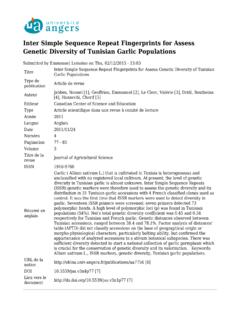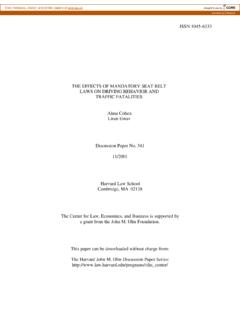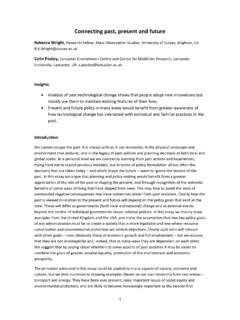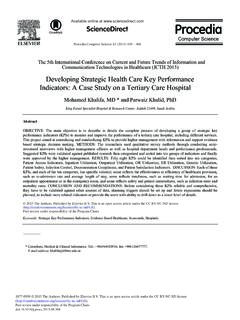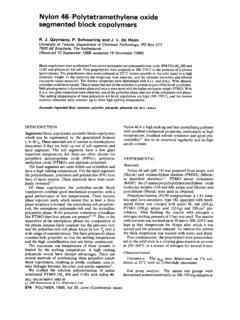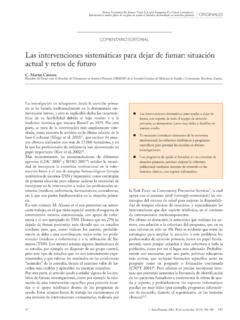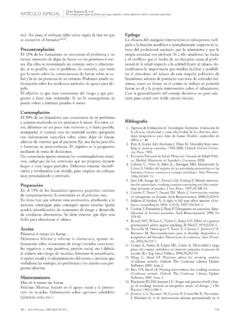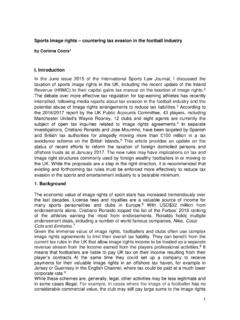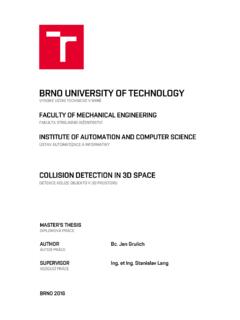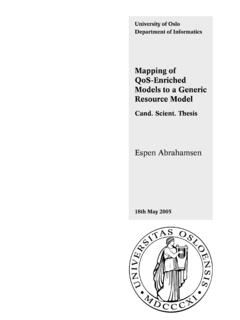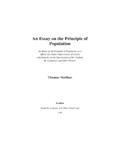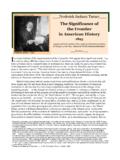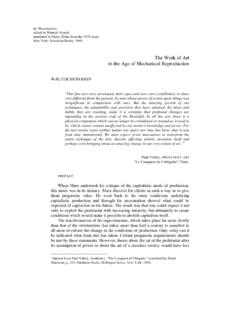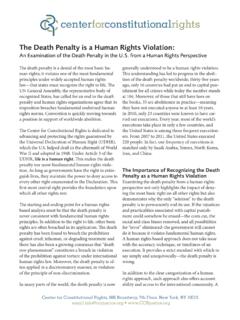Transcription of Theories of Urban Land Use and their Application to the ...
1 Theories of Urban land Use and their Application to the Christchurch Property Market by John McDonagh, Lecturer in Property Studies Lincoln University (First published as a series of articles in the Property and land Economy Institute of New Zealand Newsletter, May August 1997 and based on an essay written for a masters subject in 1995) INTRODUCTION Contrary to popular opinion, our cities are not primarily formed by the actions of local body politicians or town planners, but rather it is the aggregate activity of property developers of all types, that ultimately determine the form a city will take.
2 Multiple, and often conflicting factors influence developers decisions and therefore ultimately influence the land use distribution within a city. These factors can generally be categorised as: demographic, economic, sociological, legal and political. Of these demographic, economic and sociological factors tend to drive demand. Economic factors again are employed as the decision making tools choosing between various alternatives. Whereas the legal and political factors will establish the framework within which the development takes place and will attempt to influence, for the benefit of society in general, the direction of that development.
3 The interrelationship of factors under the previous five headings is extremely complex and one factor cannot be adequately viewed in isolation from the others. One "holistic" technique that can be used to analyse this interaction, is to study historic Urban land use throughout the world in an attempt to see if any consistent patterns of development have occurred. If such Urban land use patterns can be determined, and by deduction, their causes identified, this will help in predicting the future shape of cities in a similar set of circumstances.
4 In this essay the main Theories that seek to explain city land use patterns will be analysed and critiqued followed by an attempt to relate these Theories to the existing situation in Christchurch. From this, predictions will be made regarding where future growth will occur in Christchurch for the different types of real estate usage. Theories OF Urban land USE Burgess An early theory designed to explain the land use structures of cities was presented by Ernest Burgess in 1923.
5 Burgess developed a concentric ring approach theorising that a city expands from its original centre in a series of concentric zones. This was a development of Von Thunen s explanation of rural land uses and values, put forward in the early part of the last century, and based upon the concept of a medieval village design brought to you by COREView metadata, citation and similar papers at by Lincoln University Research Archive 2 It was assumed that the central district would be used for intensive high rent uses such as office buildings, department stores and other retailers, financial institutions, hotels.
6 Theatres etc. The ring immediately surrounding the central district would be made up of a variety of uses including low rent workers residences for those employed in the central area as well as manufacturing, wholesaling, storage and similar activities which are related directly or indirectly to those activities carried out in the central zone. Rings further out in the hierarchy would in turn be devoted to low cost wage earner housing, middle class housing, and on the rural Urban fringe higher cost upper income housing.
7 A later development of the concentric ring theory states the central zone is the "100% spot" and again includes the principal stores, office buildings, banks, theatres and hotels. It is the focal point of the social, civic and commercial life of the city. The surrounding area is termed a transitional zone, this is made up of older homes - some converted to flats, and other high density housing upon which factories and other business establishments are encroaching. To a large degree this area surrounding the CBD is blighted by the process of change and may be a high crime area.
8 In some cities this can be slum type accommodation or other interim low rent type uses. According to Ratcliff what characterises this transitional commercial fringe of the CBD are "pawn shops, food stores, pool halls, beer gardens, strip joints, automotive supply shops, shoe repairers, cheap photographers and cheap restaurants". Beyond the central zone and the transitional zone is the inner ring of residential uses. The people living here are the wage workers of the central zone and the transitional zone.
9 their houses are generally small and relatively high density or they can also be former expensive housing now converted to flats or apartments. The inhabitants prefer to live in this location because of lower rents and values and because they are within easy commuting distance of the CBD and their places of work. There is a high percentage of rental accommodation and a relatively transient population. Further out are again concentric rings of progressively higher valued housing.
10 Industry displaced from the inner core or transitional area does not encroach on these residential rings but instead leapfrogs out to Urban periphery "greenfields" sites, usually alongside important transport routes. In the concentric ring theory, the basis for the higher value properties being further out from the centre is that high income earners can better afford the accompanying commuting expenses, lower housing densities and larger houses. In addition the closeness to "green" rural land uses and the consequent distance away from industrial and commercial uses will give a greater "amenity" value (and thus economic value) to those properties.
